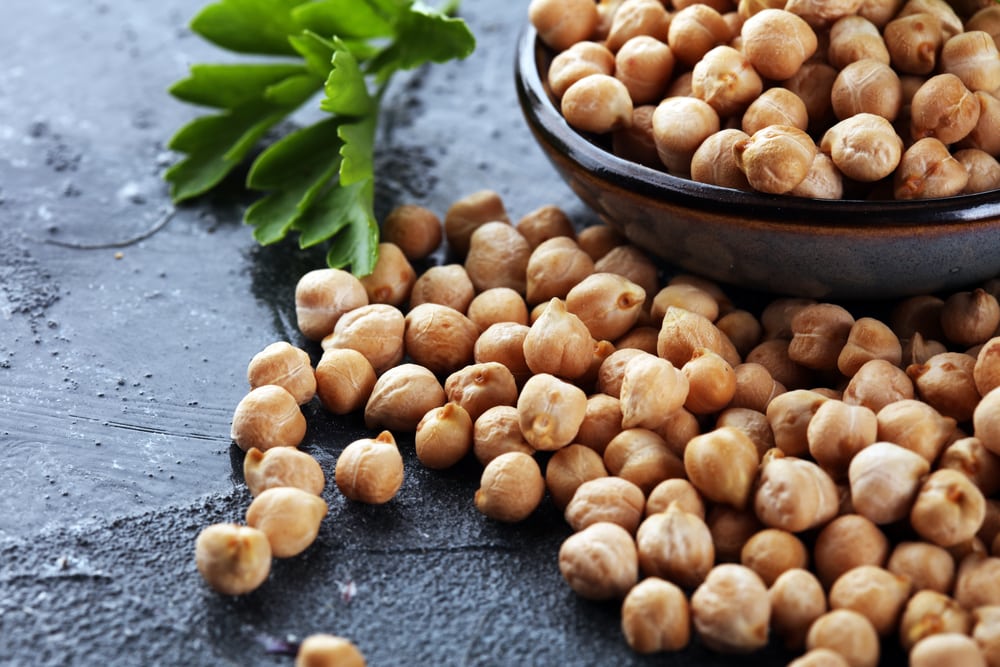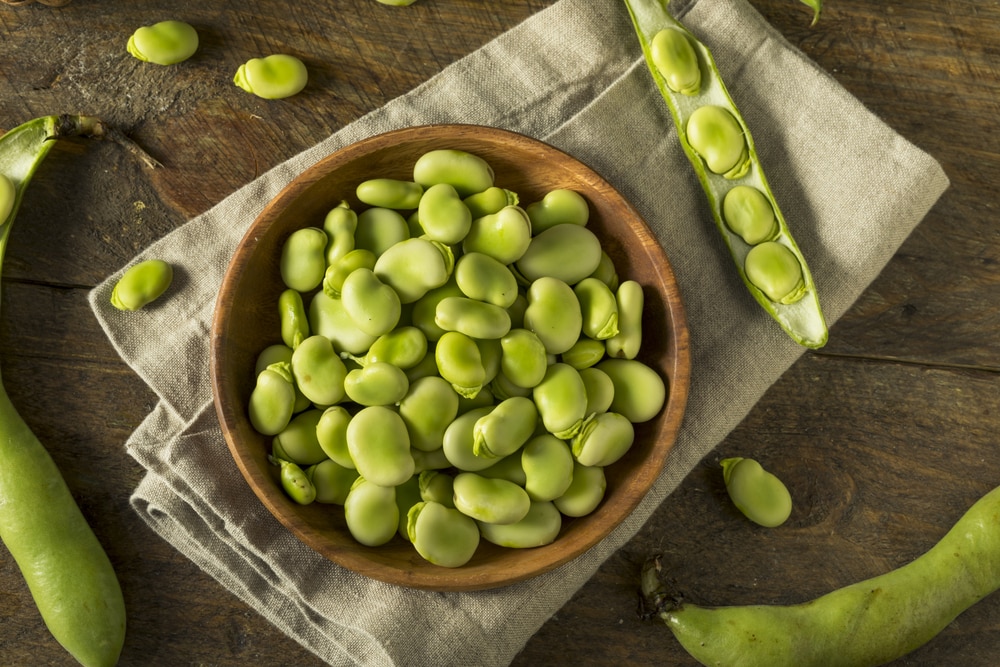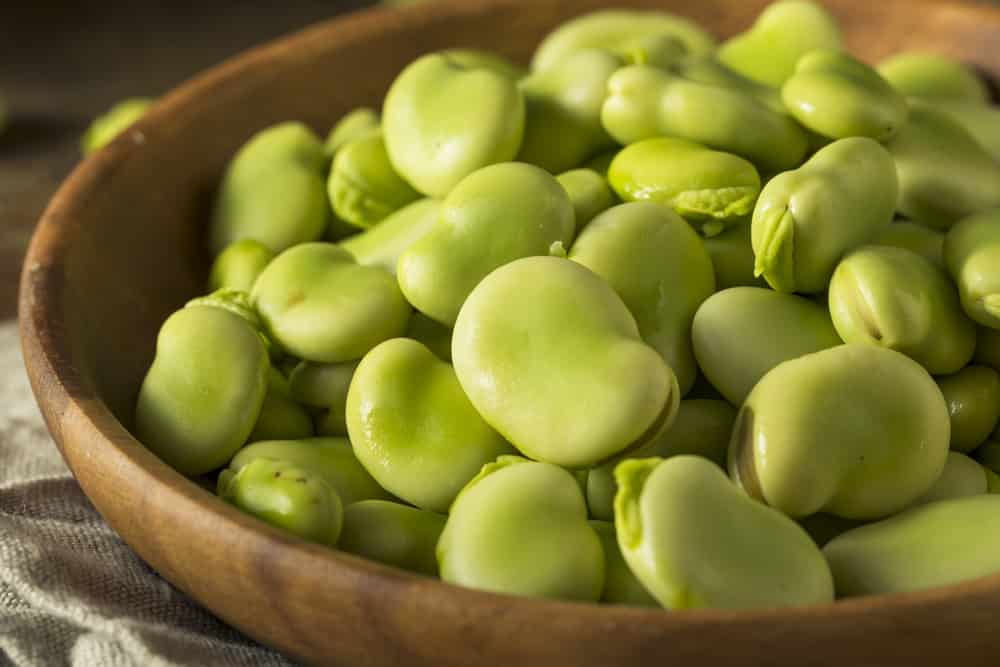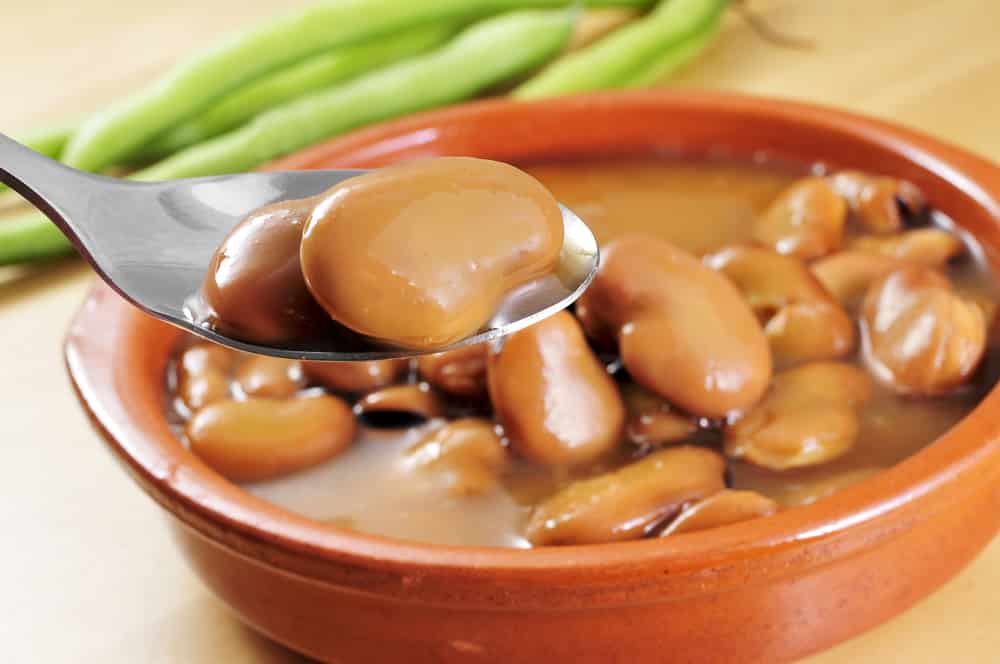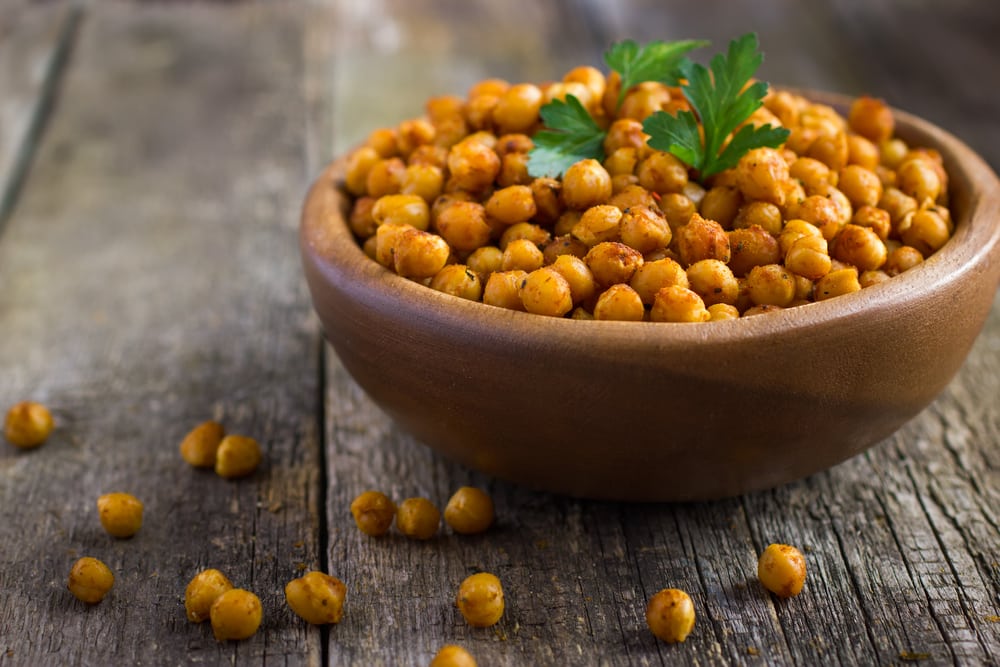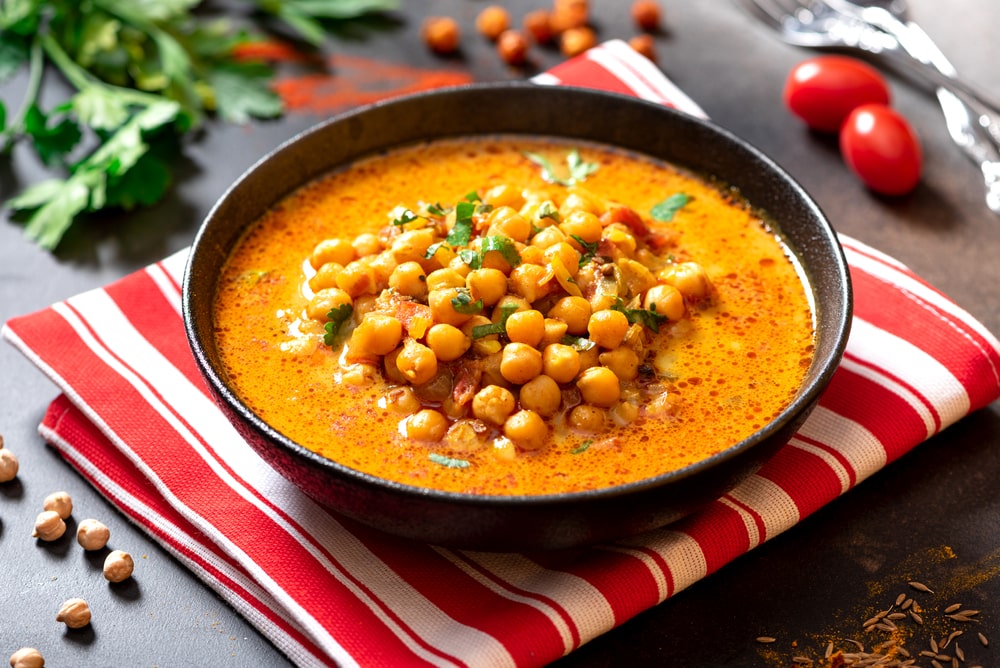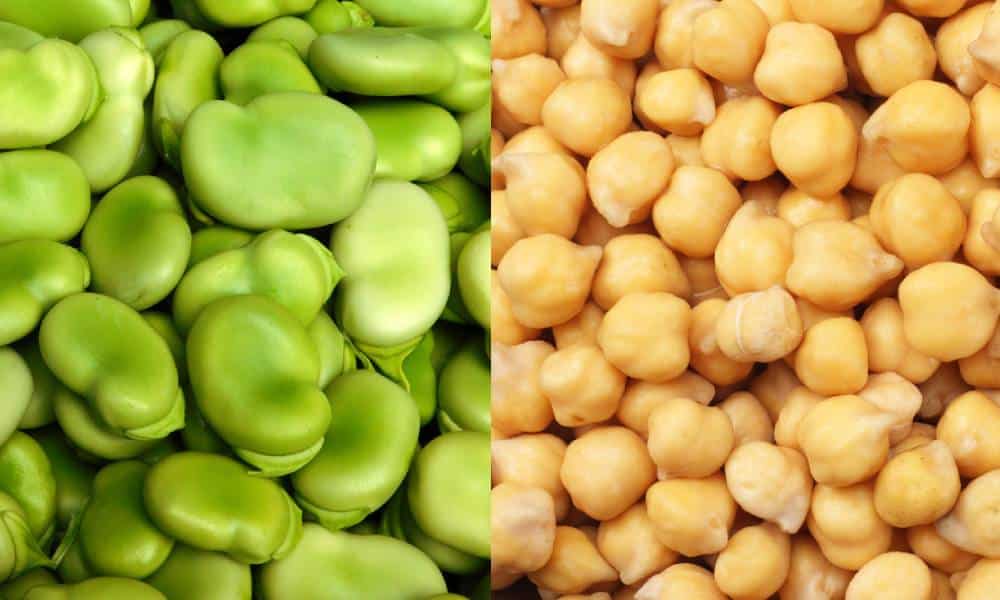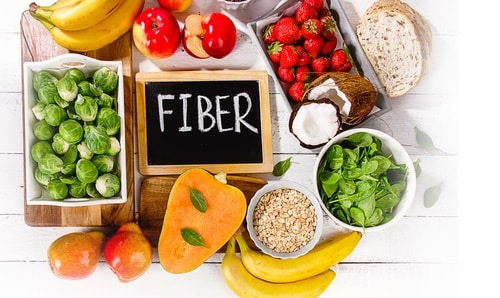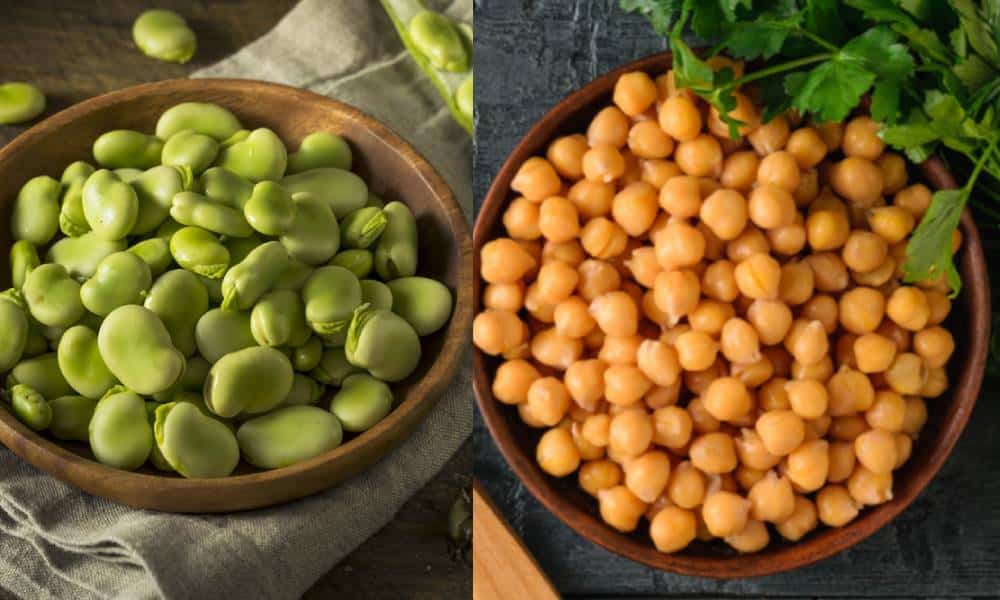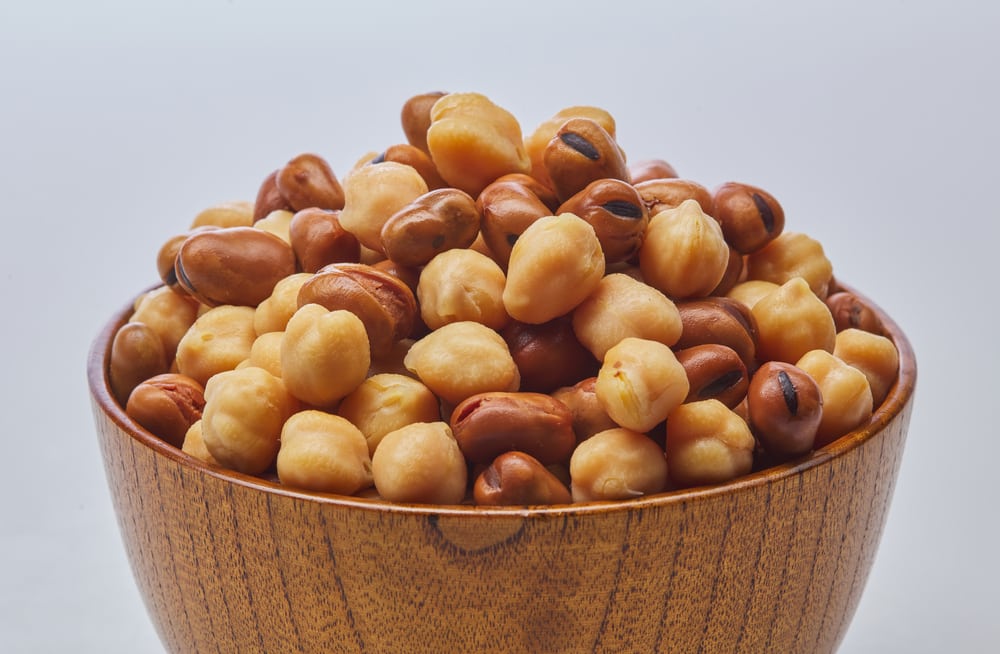
DISCLOSURE: This post may contain affiliate links, meaning when you click the links and make a purchase, I receive a commission. As an Amazon Associate I earn from qualifying purchases.
Fava beans and chickpeas are both legumes commonly used in a variety of different recipes.
They are quite different in shape, taste, and texture, however, some people still get confused between them in terms of their nutritional benefits and applications.
Unless you know each bean, it can be a struggle to decide between them. Let’s take a close look at a comparison between Fava beans vs. chickpeas so that you know exactly which type suits your recipes better.
Chickpeas
Chickpeas are one of the most famous legumes that are commonly found in most households.
Also known as garbanzo beans, gram, or Bengal gram, chickpeas are extremely high in protein and therefore makes for a fantastic meat replacement. Just a small portion provides a balanced range of nutrition.
You’ll find chickpeas commonly used in Middle Eastern and South Asian cuisine, with hummus and chana masala arising as globally popular recipes.
[amazon box=”B001PEWJWC”]
Fava Beans
Fava beans are green legumes that come in pods. With an earthy flavor and a distinct mild sweetness, fava beans vary in maturity with each stage of harvesting granting a richer flavor and coarser texture of bean when cooked.
You’ll find fava beans to be one of the most nutritious varieties available, leading to their fame as one of the healthiest legumes around.
[amazon box=”B07S2S9N53″]
Fava Beans Vs. Chickpeas Comparison
| Fava Beans | Chickpeas | |
| Origin | 6000 BCE, Eastern Mediterranean | 9500 BCE, Middle East |
| Names | Fava Beans, Fabaceae Pea, Broad Beans, Field Beans, Horse Beans, Pigeon Beans, Tick Beans, English Beans, Windsor Beans, Faba Beans | Chickpeas, Cicer arietinum, Garbanzo Beans, Gram, Bengal Gram, Indian Peas, Egyptian Peas |
| Appearance | Green To Yellowish Brown Pulses | Plump Light Cream To Yellowish-Brown Pulses |
| Size | 5 To 10 MM Diameter | 8 To 10 MM Diameter |
| Texture | Tender & Buttery | Meaty, Tender, Soft |
| Uses | Fresh Or Cooked, All-Purpose Versatility | Cooked Only, All-Purpose Versatility |
| Affordability | $9 to $11 Per Pound | $3 Per Pound |
| Protein Per 100 G | 26.12 Grams |
20.47 Grams
|
| Dietary Fiber Per 100 G | 25 Grams | 12.2 Grams |
| Food Energy Per 100 G | 1425 Kilojoules | 1581 Kilojoules |
| Saturated Fatty Acids Per 100 G | 0.25 Grams | 0.6 Grams |
| Monounsaturated Fatty Acids Per 100G | 0.3 Grams | 1.38 Grams |
| Polyunsaturated Fatty Acids Per 100 G | 0.36 Grams | 2.73 Grams |
Fava Beans Vs. Chickpeas
Both fava beans and chickpeas are highly nutritious, tasty legumes, but each has a unique flavor profile of its own. Here’s a breakdown of the main differences between fava beans vs. chickpeas.
Fava Beans
Depending on where you’re from, you may know fava beans as butter beans – the endlessly versatile legume that ranges between small, green, and immature and large, meaty, and a light shade of brown.
Let’s take a closer look at the exact characteristics of fava beans.
- Origin
Fava beans have been cultivated since ancient times, and are one of the easiest plants to grow. The first use of fava beans is recorded in the eastern Mediterranean at roughly 6000 BCE.
- Names
The scientific name for the fava bean is Vicia faba. However, this tasty hardy species of the Fabaceae pea and bean family goes by many other terms.
If you can’t find fava beans, look for broad beans (which typically refer to fava beans harvested at a more mature stage), field beans, horse beans, pigeon beans, tick beans, English beans, Windsor beans, or fava beans.
- Appearance
Fava beans are harvested as large mature pods that are roughly an inch long each. When very young, fava beans are green and the whole pod can be eaten just like a green bean.
However, once mature they turn shades of red, yellow, dark brown, and red. The beans are then removed from the darkened pod and cooked.
- Size
Each fava bean is large and flat, with an average diameter ranging between 5 and 10 mm which is a little bigger than a kidney bean.
- Texture
Young fava beans are tender and require very little cooking. They can even be consumed raw as an earthy, nutty snack. Mature fava beans cook to a buttery texture, especially if soaked first.
You’ll find fava beans to be among the meatiest varieties of beans available.
- Uses
There are few beans that are as versatile as fava beans. Serve young, fresh fava beans as is with a little spice and perhaps a crushed herb or cook them up as you would any other bean.
They can take the place of meat in just about any recipe. From soups to stews, sauteed, boiled, roasted, steamed, or even fried, fava beans taste great.
They’re an excellent side dish but are even better suited to taking centerstage as your main protein in any recipe you prefer.
- Affordability
Most stockists keep fava beans fresh or dried at reasonable prices. Expect to pay around $11 per pound for dried organic fava beans, and approximately $9 per found fresh.
Chickpeas
Chickpeas are often considered a superfood due to their balanced nutritional profile. As a legume that’s extremely high in protein, chickpeas feature across countless forms of regional cuisine.
There are loads of ways to use chickpeas thanks to the mildly nutty flavor and fairly firm consistency that cooks soft and tender. Let’s take a closer look at what makes chickpeas such a popular bean variety.
- Origin
Chickpeas have been cultivated for over 9500 years, with the earliest uses tracing back to the Middle East. They are one of the earliest beans cultivated widescale by mankind.
Today, India produces over 70% of the world’s chickpeas.
- Names
The scientific name for chickpeas is Cicer arietinum. However, chickpeas go by a variety of other names. If you can’t find chickpeas in your local store, look for gram, Bengal gram, garbanzo beans, Indian Peas, or Egyptian peas instead.
- Appearance
Chickpeas are harvested in short pods containing either two or three-round, plump seeds. Chickpeas are harvested in short pods containing either two or three-round, plump seeds.
Both white and green chickpeas are cultivated, but white chickpeas are far more commonly found. Mature chickpeas can be eaten raw or cooked, while dried and canned chickpeas are also readily available.
- Size
Each chickpea pulse measures between 8 and 10 mm on average, and a chickpea pod is typically around 2.5 cm in length.
- Texture
Chickpeas have an even more buttery flavor than fava beans, with a silkiness to its soft consistency. They’re one of the softest beans when cooked.
- Uses
Between its fresh variety requiring little more than ten minutes of boiling to cook tender to dried chickpeas which are ideal in all sorts of meals and even ground to flour, there are few beans with as many uses as chickpeas.
They’re a primary protein that packs a considerable nutritional punch.
Chickpeas can be used in the place of meat in most meals, but carry a distinctly savory nutty taste that makes them the ideal protein to feature as the centerpiece of your meal.
As a result, many regional traditional delicacies across the world feature chickpeas.
- Affordability
Chickpeas have become so cheap that it’s far more expensive to cultivate them at home than to buy commercial varieties.
Expect to pay around $3 per pound of dried organic chickpeas, with fresh chickpeas seldomly available. Canned chickpeas cost approximately $1.30 per 15-oz tin.
Comparison Between Fava Beans vs Chickpeas Based on Nutritional Values
Now that we’ve got the basic differences between fava beans vs. chickpeas covered, here’s an overview of the basic nutritional differences.
Protein Per 100g
Protein is an essential macronutrient involved in countless processing functions in the human body including the formation and repair of cells and body tissue.
A balanced diet must include the minimum recommended protein intake of 1 gram per kilogram of body weight or 0.36 gram of protein per pound.
- Chickpeas have 20. 47 grams of protein per 100 grams
- At 26.12 grams of protein per 100 grams, fava beans are slightly higher in protein.
Dietary Fiber Per 100g
Consuming a healthy quantity of dietary fiber, also known as roughage, is essential to maintaining a healthy gut, digestion, and metabolism.
Roughage is typically present in most vegetables and comes in either soluble or insoluble forms.
Consuming a healthy portion of dietary fiber promotes healthy, regular bowel movements and balances the gastrointestinal tract. The recommended daily intake for dietary fiber is 25 to 30 grams daily.
- Chickpeas contain 12.2 grams of dietary fiber per 100 grams. This is quite a low quantity of dietary fiber compared to fava beans.
- Fava beans contain 25 grams of dietary fiber per 100 grams which is a healthy, high concentration to consume.
Food Energy Per 100g
Food energy is used by the body and released from a variety of compounds within meat and vegetables. Carbohydrates, fats, proteins, and other organic substances release food energy defined as kilojoules.
It represents the energy present in any given food type, a fuel source metabolized by the body. A minimum of 7500KJ of energy is required daily to maintain a healthy and balanced diet.
- Chickpeas are quite high in energy and provide 1581 kilojoules of energy.
- Fava beans provide a little less energy at 1425 kilojoules per 100 grams.
Saturated Fatty Acids Per 100g
Our body does not require a high amount of saturated fatty acids as they are unhealthy. Too high of an intake of saturated fatty acids has been connected to raising LDL-C levels which raise the risk factor for heart disease.
Saturated fat can produce bad cholesterol which can increase the risk of having a stroke and developing atherosclerosis. Reduce your fat to 10% of your daily caloric intake to maintain a healthy diet without any heightened health risks.
- Chickpeas have a high amount of saturated fatty acids as compared to fava beans. 100 grams of chickpeas contain 0.6 grams of saturated fatty acid.
- Fava beans are healthier to consume as they only contain 0.25 grams of saturated fatty acids per 100 grams.
Monounsaturated Fatty Acids Per 100g
Monounsaturated Fatty Acids are a type of fat that’s very healthy for the body. As an unsaturated fat with a double bond present in its structure, monounsaturated fats increase good cholesterol levels while decreasing bad cholesterol.
This leads to a lower risk of heart disease and better overall cardiovascular health. Maintain an intake of up to 20% of your daily caloric intake in order to ensure a balanced diet.
- Chickpeas contain 1.38 grams of monounsaturated fatty acid per hundred grams which is very healthy for consumption.
- Fava beans only contain 0.3 grams of monounsaturated fatty acid per 100 g which is still healthy but comparatively less than chickpeas.
Polyunsaturated Fatty Acids Per 100g
Polyunsaturated Fatty Acids are very similar to monounsaturated fatty acids, however, they have more than one double bond in their molecular structure.
This makes this type of fat very healthy because it also decreases bad cholesterol and increases good cholesterol levels. Up to ten percent of the calories of a healthy diet can be comprised of polyunsaturated fatty acids.
- In 100 grams of chickpeas, there are 2.73 grams of Polyunsaturated fatty acids making them higher in polyunsaturated fatty acids than fava beans.
- Fava beans contain 0.36 grams of Polyunsaturated fatty acids per 100 grams.
Fava Beans Vs. Chickpeas – Which Is Best?
Fava beans are higher in protein and dietary fiber, scoring them a better nutritional profile than chickpeas on average. However, the healthier option depends on your diet.
Both are tasty, versatile, and extremely good for you. Low in fat and high in protein, you can eat beans regularly as a healthy supplement to almost any eating plan.
Hopefully, this article helped guide you through all the defining differences so that you know which is better for your recipe between fava beans vs. chickpeas.
